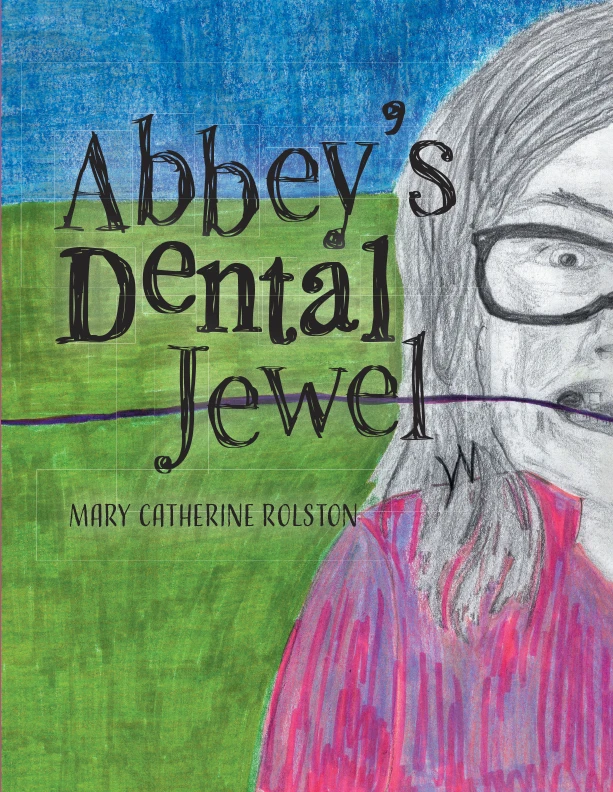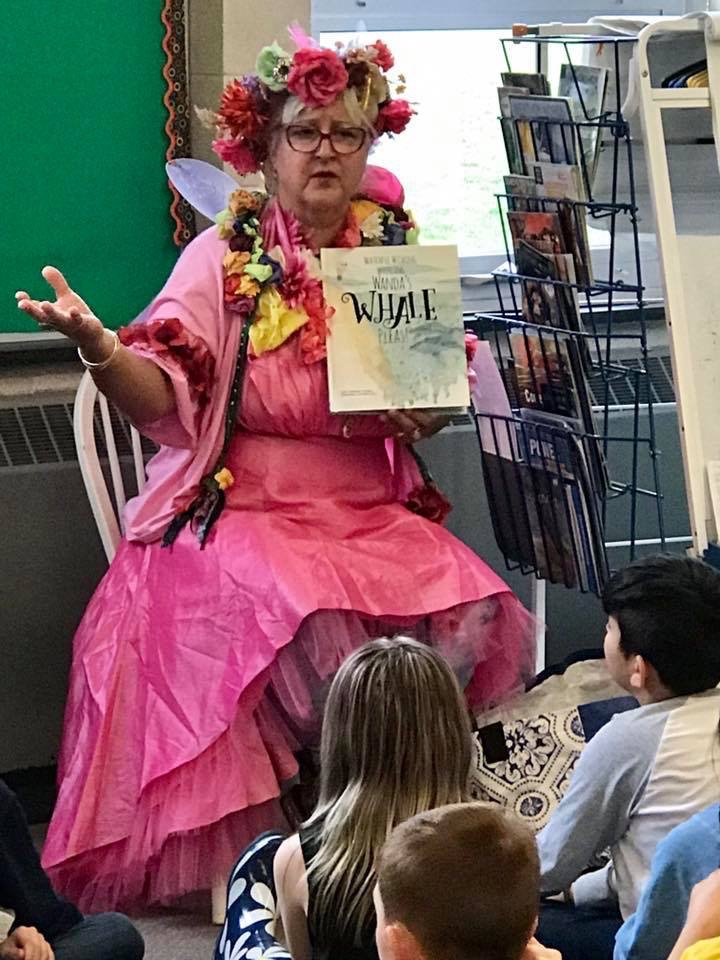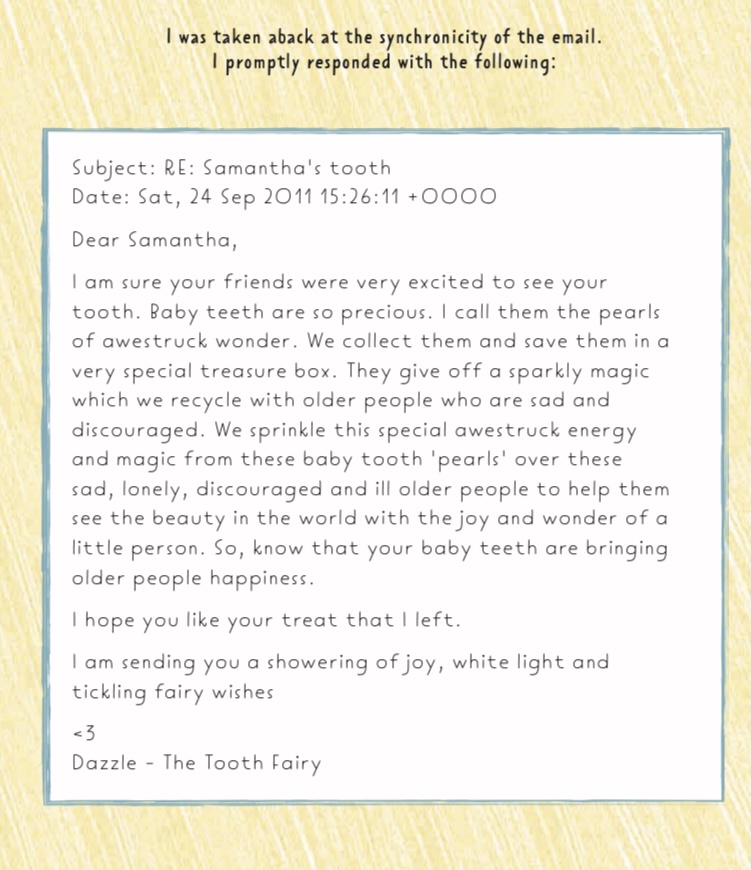Abbey’s Dental Jewel
Abbey is about to lose her tooth and is excited about the subsequent visit from the tooth fairy. Her friends offer to speed up the tooth loss by extracting her tooth with a ribbon. The first two-thirds of the story is written as an alliterative- tongue-twisting, rhyming couplet ABC tale. Once the tooth is pulled the children learn that once the tooth fairy picks up their teeth, they bring a special joy to sad and lonely retirees.
Available at:
Dazzle's Suggestions
When writing stories, I often look up synonyms and/or words that start with a particular letter or letter sound blend.
Below is an alphabetical list of adjectives (words that describe a noun – a person, place, object or idea) or adverbs (word that modifies verbs) that have both the same sounds and similar meanings. Use these in the following challenges:
- Make one dinner a week a tongue twister dinner. Each week one person in the family is to challenge the rest of the family with an existing tongue twister, (you can find these in abundance by doing a google search https://www.engvid.com/english-resource/50-tongue-twisters-improve-pronunciation/). Whoever can say it five times the fastest without a mistake gets extra dessert or treat.
- Give the first word and ask if the other person can come up with the two other words.
- Give the three adjectives see if the other person can come up with a noun that fits that description. See if the noun has the same sound. (Slippery Sammy the snake is slick and sneaky). Can they make a sentence?
- Try using these words to write a rhyming couplet poem (the end of two consecutive lines in the poem end with rhyming words ie. (Shh, Slippery Sammy the snake is slick and slithers silently But booming, banging baboons bounce violently). Assemble these rhyming couplets into a poem or story. A great resource for finding rhyming words is Rhymezone.


- Attentive: alert, aware, awake
- Booming: banging, bumping
- Calm: cool, composed
- Drab: dingy, dreary, dull
- Excellent: exceptional, extraordinary
- Fabulous: fantastic, fanciful
- Grand: great,
- Harsh: hard
- Illusive: illusionary
- Jumpy: jittery
- Knaggy: knarred
- Loud: lurid
- Mighty: magnificent, marvellous
- New: novel
- Obscure: opaque
- Peaceful: passive
- Question: query
- Respite: rest, relax
- Strong: sturdy, solid
- Tease: torment
- Unification: union
- Vacuum: void
- Winging: whizzing
- X …sorry couldn’t think of anything appropriate oops
- Yes: Yep
- Zoom: zip
Inspiration for the Story
The following email exchanges triggered some brainstorming on my part. I was teaching kindergarten at the time and began thinking of how to combine the tooth fairy story as I told Samantha in the email with the idea of an alliterative ABC story. The idea is that the alliterative lines would be tongue twisters to enhance phoneme development and awareness. In addition, I wanted to create a story that would offer more complex vocabulary with rhyming couplets to appeal to the later primary and early junior grades. Voila, the story of Abbey’s Dental Jewel was birthed! Thank you, Alex and Samantha (who is now 20 years old and in university) … you inspired this story!
About the Illustrator
Many thanks to:
Lauren, Olivia and Julian for being my illustration models. I wouldn’t have had the courage to try to illustrate this story, had it not been for your willingness to act out the story in order that I would have reference scenes for my sketching.
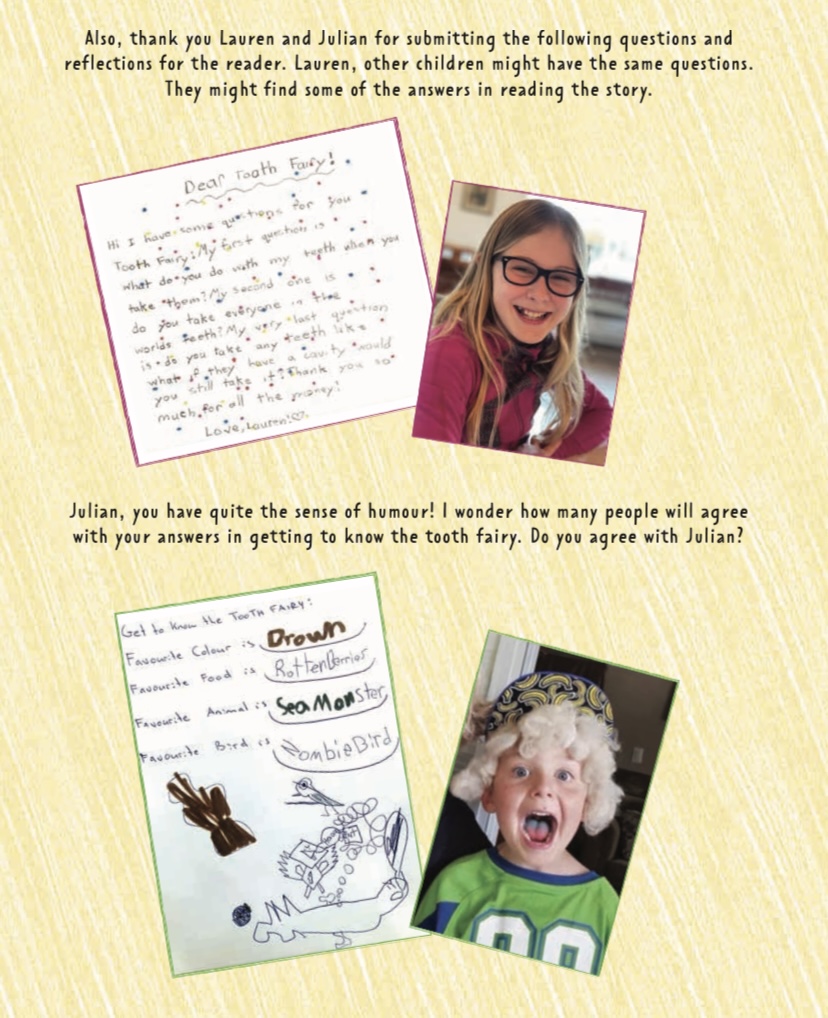
Lauren & Julian and their questions/reflections
Guide for Reading: PRC
Predictions, Reflections & Connections
Predictions
Predicting is an essential tool when developing as a strong reader. This story has been written to hook the young audience in engaging in predictable events.

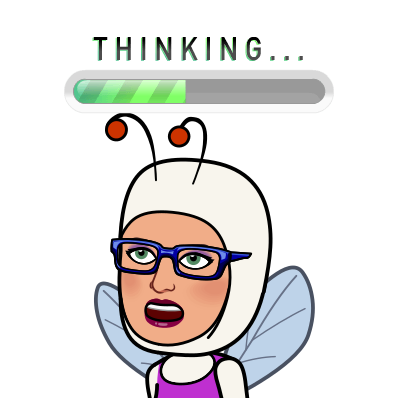
Reflections
Reflecting throughout a book makes the story extra personal and come alive. It reflects a reader’s level of comprehension. A more thoughtful and complex reflection and connection reveal a higher understanding of the story. They also help reinforce one’s memory sequence which forms the basis of a retelling with more detail and reference to nuance. A simple and literal retelling reflects a more simplistic understanding.
Connections
Making connections facilitates a deeper understanding of a story through making inferences, noting details and relating them to prior information. It is seeing, linking, and articulating other topics and events to the story. The reader is applying this reading experience to other learned information. Often when making connections the reader will arrive at exciting new insights that extend beyond the literal story.

Additional Resources
Ideas for Teachers & Parents:
https://firstgradeframeofmind.com/alliteration-activities-for-kids/
https://www.lexialearning.com/blog/rhyming-and-alliteration-7-creative-ideas-classroom
https://earlyimpactlearning.com/alliteration-activities-for-preschool/
https://www.brighthubeducation.com/middle-school-english-lessons/72535-alliteration-lesson-plans/
https://medium.com/@writingcorissa/the-superpower-of-alliteration-c6bc6c98c4b9
https://educationaltoyfactory.com/alliteration-for-kids-make-your-child-a-better-reader/

